Between two rivers, a city’s hopes are tied to healthy waters
The Clean Water Act revived the James and the Appomattox, allowing Hopewell to seek its own renewal
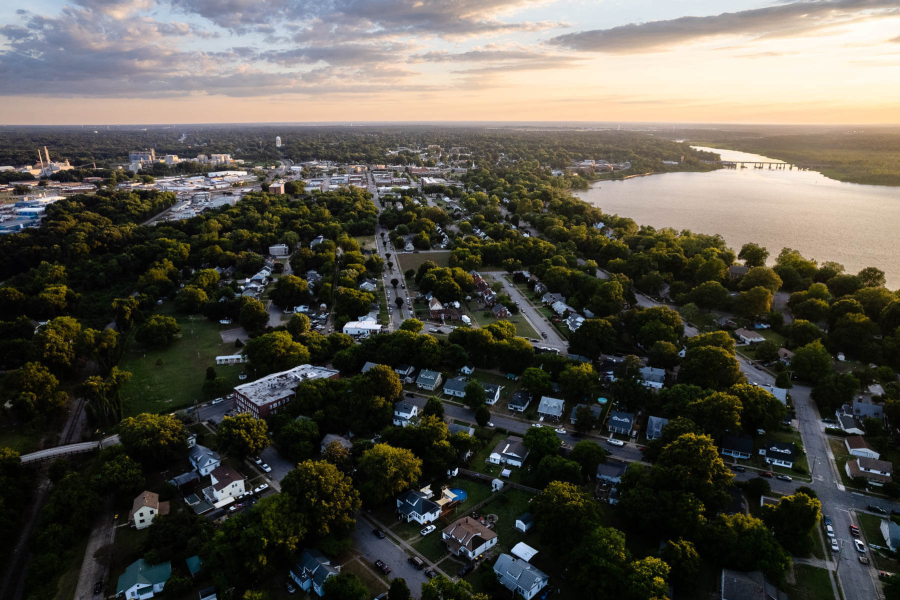
Standing on the deck of Ban Rafey’s house above the Appomattox River one can spot blue herons hunting along endless wetlands and hear fish periodically splashing out of the water. The scene makes it hard to imagine what her hometown looked like in the early 1970s.
Back then, Hopewell was still known proudly as the “chemical capital of the South” but its revered local industry was beginning to bring environmental degradation to the nearby Appomattox and the James River. As a high school cheerleader during that time, Rafey can recall the taunts that opponents used.
“One of them was ‘I smell, you smell, we all smell Hopewell,’ Rafey recounts. “And then there was ‘Bobby socks, knee socks, nylon hose. Here comes Hopewell, so hold your nose.’”
“We’ve lived through that, and it was kind of an embarrassment.”
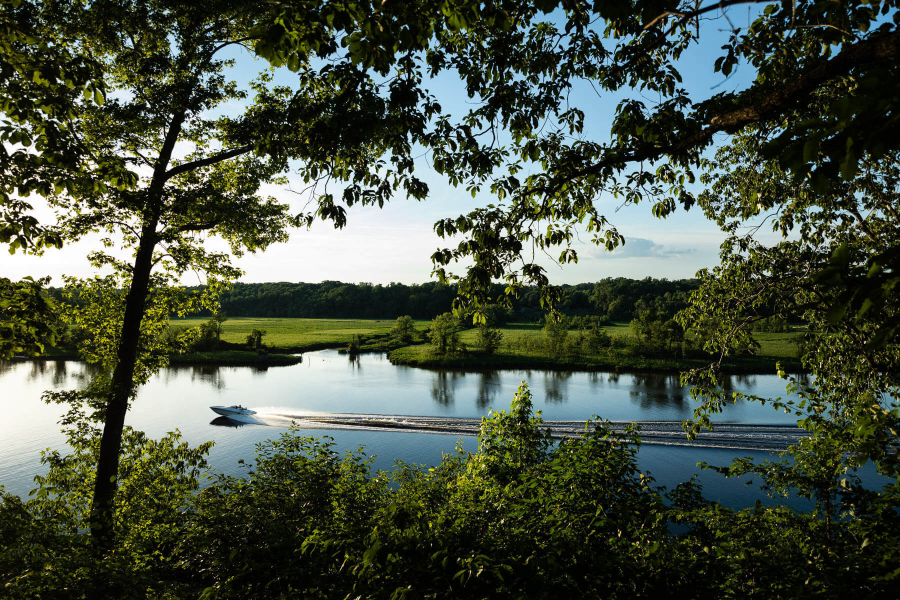
In the decades after World War I, when the chemical company Dupont first manufactured explosives at the confluence of the Appomattox and James rivers, Hopewell’s rapid rise was tied to industries that eventually extracted a heavy environmental toll. In the summer of 1975, pollution issues that had only garnered attention at the local and state level erupted into national awareness when a toxic pesticide known as Kepone was revealed as the source of a mysterious illness afflicting dozens of workers at its manufacturing plant with tremors and other symptoms. The facility had also been dumping tens of thousands of gallons of Kepone waste daily into Bailey’s Creek, causing fisheries in 60 miles of the lower James River to be shut down for up to 13 years afterward.
“When we were young, we would go into Bailey's Creek with our little
paddle boat or something, and it was just—you could smell it,” says Matt
Balazik, who grew up in Hopewell in the 1980s and is now a research
scientist at the Virginia Commonwealth University Rice Rivers Center.
“It was…almost like a dying area.”
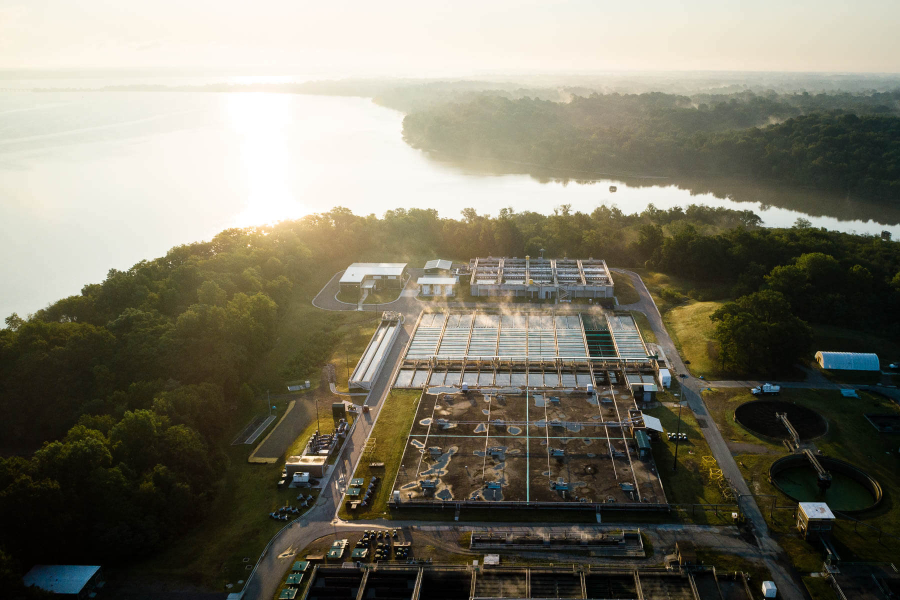
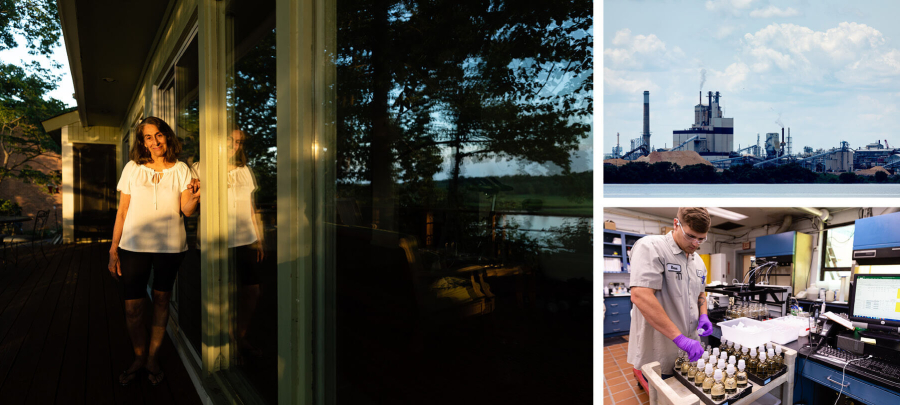
Though 1975 cast a shadow on Hopewell, officials at that time were already laying the groundwork for the river’s long recovery. That same year, construction began on a new wastewater treatment plant, completed in 1978, that is one of only a handful in the country that can handle both domestic and industrial waste. In a turnaround spurred by the Clean Water Act of 1972, the river ceased to be a catch-all dumping ground for all types of pollution.
Today, Hopewell continues to recover, and efforts to not only reduce pollution but increase access to the river are improving the outlook of the community. The city still ranks near the bottom statewide for health outcomes and quality of life, and the poverty rate is nearly twice the state average. But the natural appeal of Hopewell’s waters is creating opportunities to improve the health and livelihoods of roughly 23,000 residents.
“I just think it's a slow and steady improvement and you're really starting to see it now,” Balazik says.
For a long time, pollution kept Hopewell residents away from its waters. Even after the rivers’ recovery was well underway, limited access made it hard for many to fish, boat, paddle or otherwise enjoy themselves. Local leaders began to acknowledge that people needed a stronger connection to the water if the city was going to fully reap the benefits.
'It's the river, stupid'
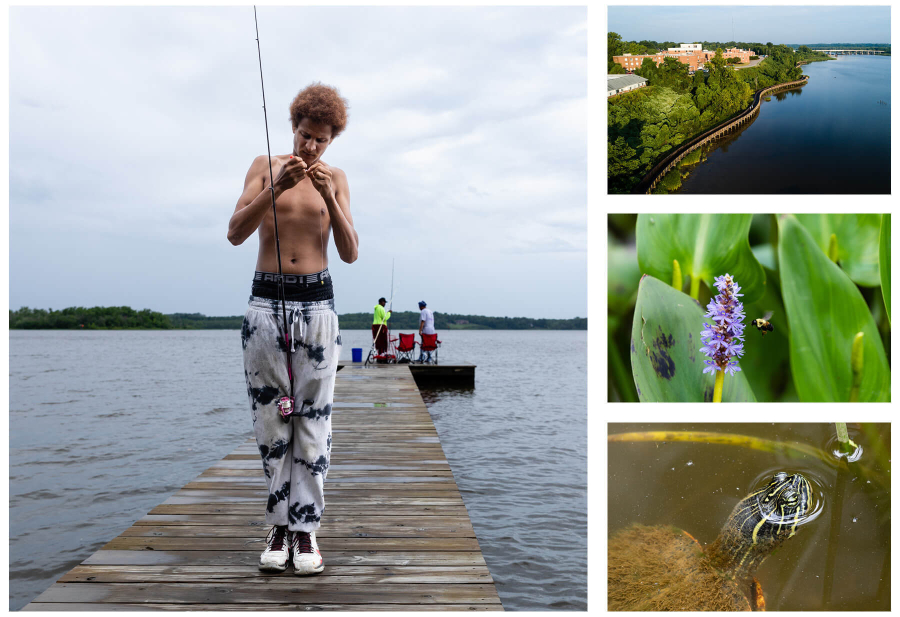
On a hot July day, Marvin Johnson drives a little over five miles from his home in Prince George, arriving at City Park in Hopewell before 7:30 a.m. in order to beat the heat. Once there, he steps onto the Riverwalk for his usual four laps back and forth, walking over two and a half miles on the one-third-mile boardwalk.
He stops to take video and pictures of two red foxes visiting the bank of the James. He says he once filmed a family of deer along the water—a buck, doe and fawn all together.
“You get to walk the river edge and see nature,” says Johnson, who started using the Riverwalk for exercise in March and comes six days a week.
“I love it,” Johnson says. “I wish it was longer.”
The Riverwalk has proven extremely popular, garnering roughly 60,000 visits in 2021, measured by trail sensors monitored by the Friends of the Lower Appomattox River (FOLAR). In fact, the city of Hopewell has already funded the second phase of the Riverwalk, which will nearly double in length and connect to a second entrance at Hopewell City Marina.
But twenty years ago, according to former FOLAR chairman Wayne Walton, public river access in Hopewell was pretty much limited to the marina and City Point, a unit of Petersburg National Battlefield that is owned by the National Park Service.
“Hopewell sits on the two most famous rivers in the country, two of the most famous rivers,” Walton says. “And we were not taking advantage of the water.”
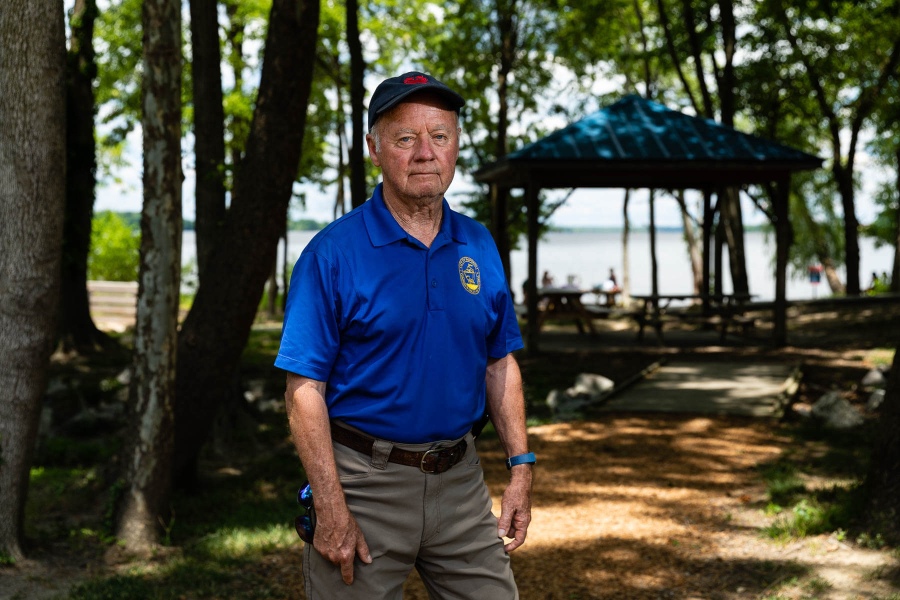
In 2003 he started cleaning up City Park, where invasive vines had made the shoreline of the James unusable.
“Pretty much by myself, had a lawn mower, just cut through the kudzu,” Walton says. He and his wife, Ann, hauled out broken glass and other trash. Over the course of about 15 years, he attracted thousands of volunteers and corporate donations of materials like stone for trails.
Walton and another key advocate for the park, FOLAR’s first chairman Richard Taylor, “took out thousands of tires,” says Paul Reynolds, a FOLAR board member and chairman of the Hopewell Planning Commission. Paul and his wife Craig are regular kayakers who moved to Hopewell four years ago, lured by its revitalized natural appeal. “[City Park] was the place not to go…and Wayne saw the possibilities.”
Walton says the park allows low-income residents a place they can visit easily, for free, where “they can bring their kids down here and safely swim.”
When Walton was elected to the Hopewell city council in 2008, he pushed for projects like the Riverwalk. His attention-getting slogan: “It’s the river, stupid.”
After Walton and others literally cleared the way, additional efforts by the city took shape at City Park. Today it is home not only to the Riverwalk, but a nature-themed playground and a small patch of native meadow plants have taken the place of trash and vines.
Reducing stormwater pollution and protecting green space
The Riverwalk complements other environmental projects that have improved quality of life in Hopewell. Once the second phase of the Riverwalk is completed, for example, it will connect to the Riverside Park Greenway, a 1,100-foot forested trail constructed alongside a 2,200-foot stream restoration. Someone walking from downtown Hopewell could enter City Park, follow the Riverwalk to the marina, and then continue along the Greenway into the adjacent neighborhoods.
The Riverside Park Greenway project was funded in part through a grant by the Chesapeake Bay Program, administered through the National Fish and Wildlife Foundation (NFWF) Chesapeake Bay Stewardship Fund. Two additional NFWF grants have allowed the nonprofit Chesapeake Bay Foundation (CBF) to establish and continue an initiative it calls the Hopewell Restoration Project.
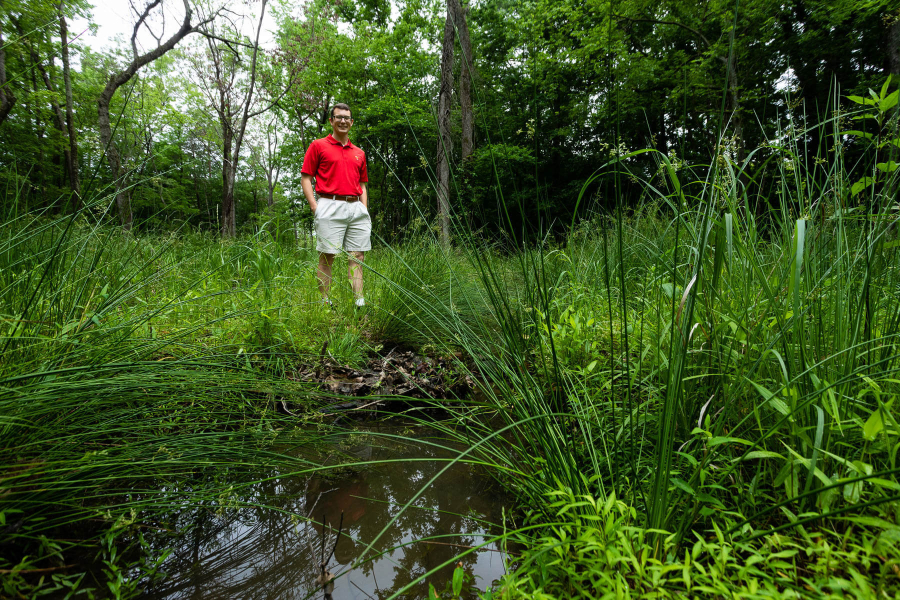
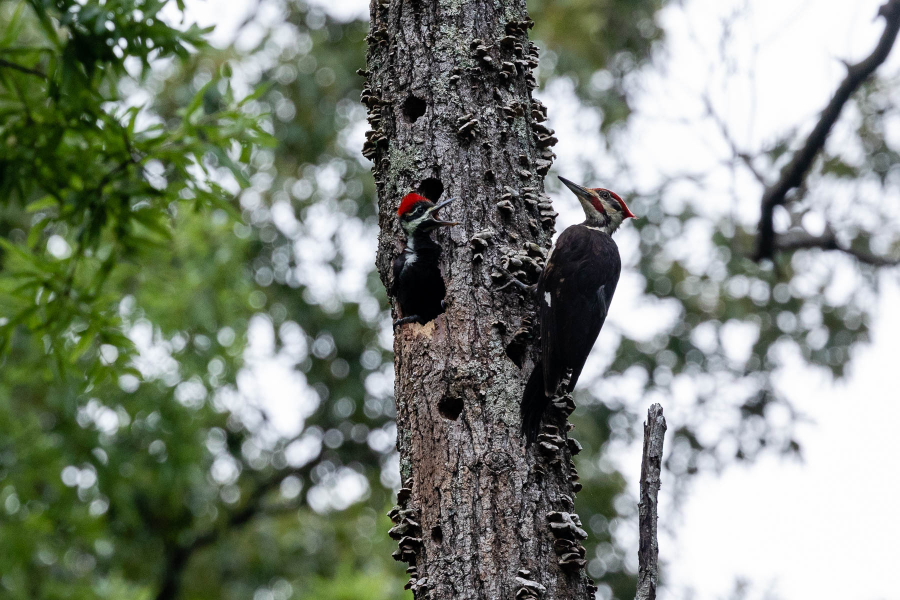
In 2021, under one of the grants, CBF worked with the city to restore Cabin Creek at Hopewell’s Mathis Park, reducing erosion and stemming silty floodwaters that used to cascade across a parking lot and flood a playground area. Cabin Creek collects water from nearby neighborhoods and the Hopewell High School campus before flowing through Mathis Park to the Appomattox River.
“Just imagine a scoured creek bed that ranged anywhere from five to 10 feet deep,” says Johnny Partin, vice mayor of Hopewell. “There was just total erosion going through—trees, falling over, everything messed up.”
Partin—who Walton says is his younger “clone”—has participated in over 100 trash pickups around Hopewell. For morning walks, he and his friends make frequent use of its parks, including a new mulched trail along Cabin Creek.
“When I come out here walking myself, I've seen a handful of folks and they thoroughly enjoy it,” Partin says. “They also love the fact that we're trying to put in more trails, more walking areas and trying to protect some of our green space here in the city.”
Partin says the Mathis Park project is the one that pushed Hopewell past its goal for reducing pollution under the Chesapeake Bay Total Maximum Daily Load, the federal framework for limiting the flow of harmful nitrogen, phosphorus and sediment into the Chesapeake Bay.
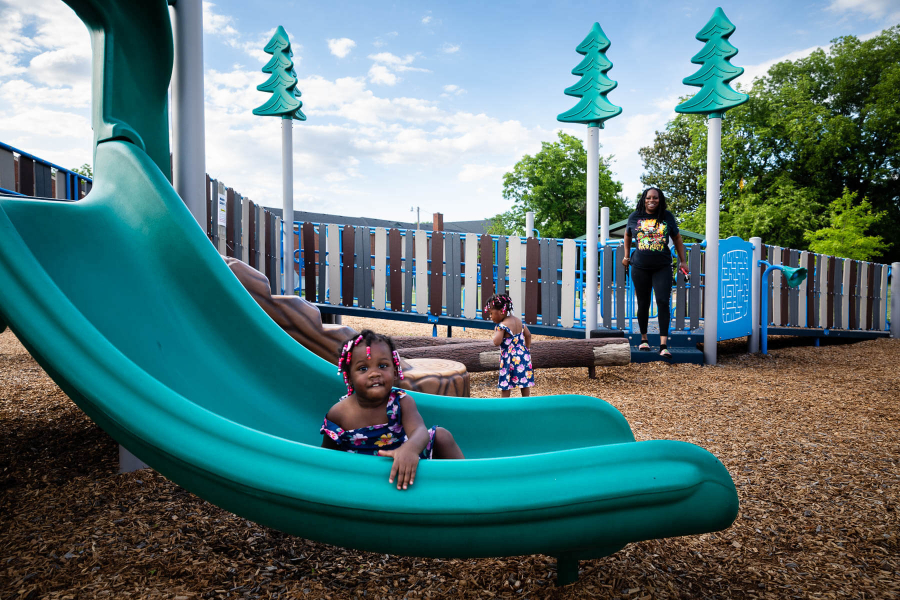

In 2018, under the same grant as the Mathis Park work, CBF also began an urban tree planting effort. Trees help soak up stormwater runoff pollution, and an initial tree canopy assessment also showed that the areas of Hopewell that lack trees are disproportionately low-income and also have lower life expectancies. Urban trees can help improve both health and economic outcomes by keeping entire neighborhoods cooler, reducing heat-related illness and lowering energy bills.
To make sure newly planted trees survive to maturity, CBF trained roughly a dozen volunteers who have since spun off into a nascent nonprofit called Hopewell Tree Stewards.
Altogether, NFWF grants have contributed nearly $1 million to restoration efforts in Hopewell. Along with other efforts, including a $76 million upgrade to Hopewell’s wastewater treatment plant in 2016, the stormwater work aims to improve the health of downstream tributaries and the Chesapeake Bay. But it’s also locals who are seeing a change for the better.
“I think it's certainly changing our name and our reputation here in the Commonwealth of Virginia,” Partin says. “Certainly, the [environmental] work that's been done over the past 10 years here in the city of Hopewell has really been remarkable.”
One Hopewell
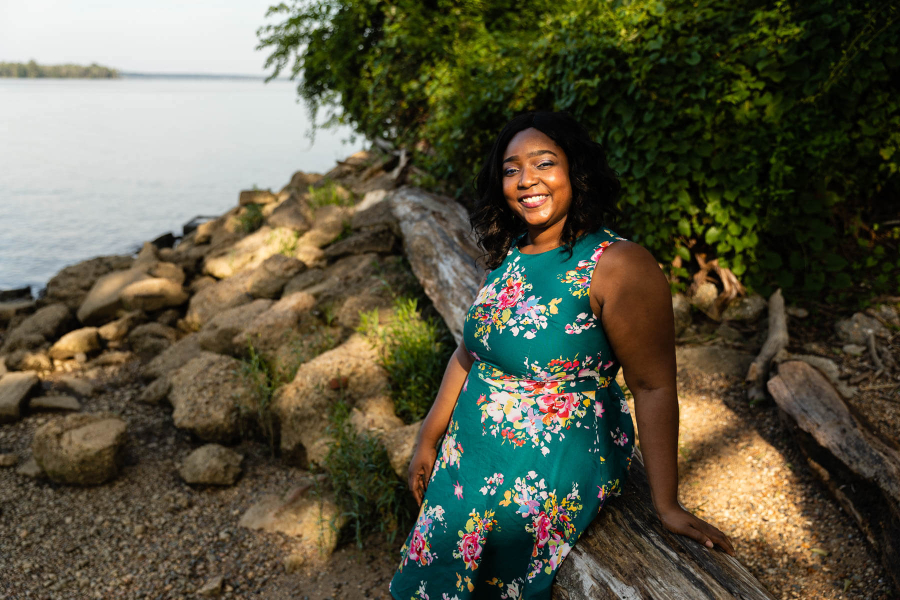
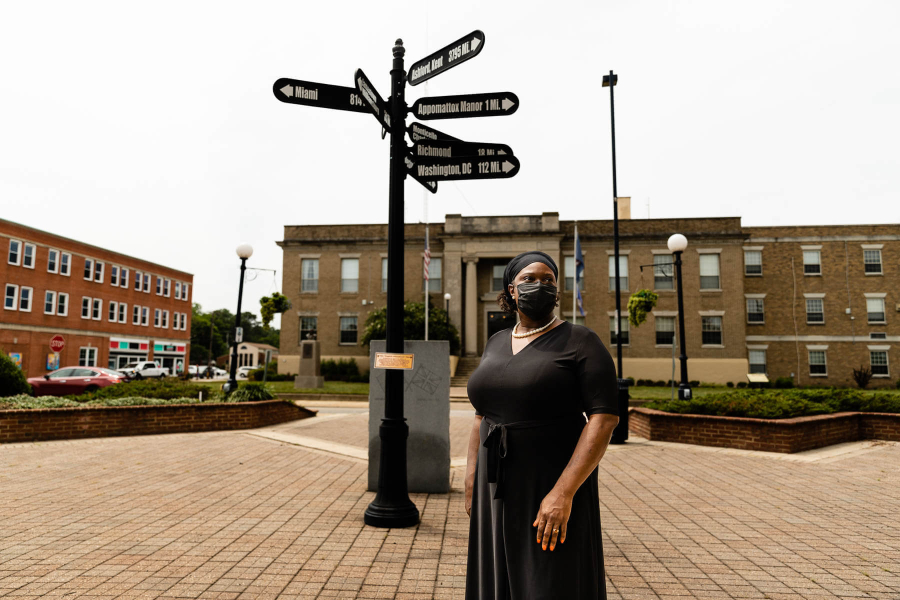
Despite Hopewell’s environmental gains, the progress has yet to translate into improved health and economic outcomes for all of the city’s residents. To help close that gap, local leaders are increasingly recognizing the intersection between environmental and social challenges in order to find new ways to address both.
Jasmine Gore, a Hopewell council member and former mayor, uses the federal response to the covid-19 pandemic through the American Rescue Plan Act (ARPA) as an example of thinking holistically in order to identify additional resources.
“How can you go get this ARPA fund to do an infrastructure project that might address what you’re doing with the watershed—but then also improve the community so you can hit two things at one time?” Gore says, “You have access to that pool of money because you're looking at it from that angle.”
Gore, who is also the current chair of the Chesapeake Bay Program’s Local Government Advisory Committee (LGAC), champions an effort called the One Hopewell Initiative, shaped by grants from the National League of Cities and the Cameron Foundation, to address the social determinants of health in a comprehensive way.
“When it comes to social determinants of health, that is all factors that influence where you are born, grow, live, work, play and age,” Gore says. “So that is your environmental factors. It is your work. It is your education. It is your housing. It is your access to transportation. It is all of those things that tie into how long and how well you live.”
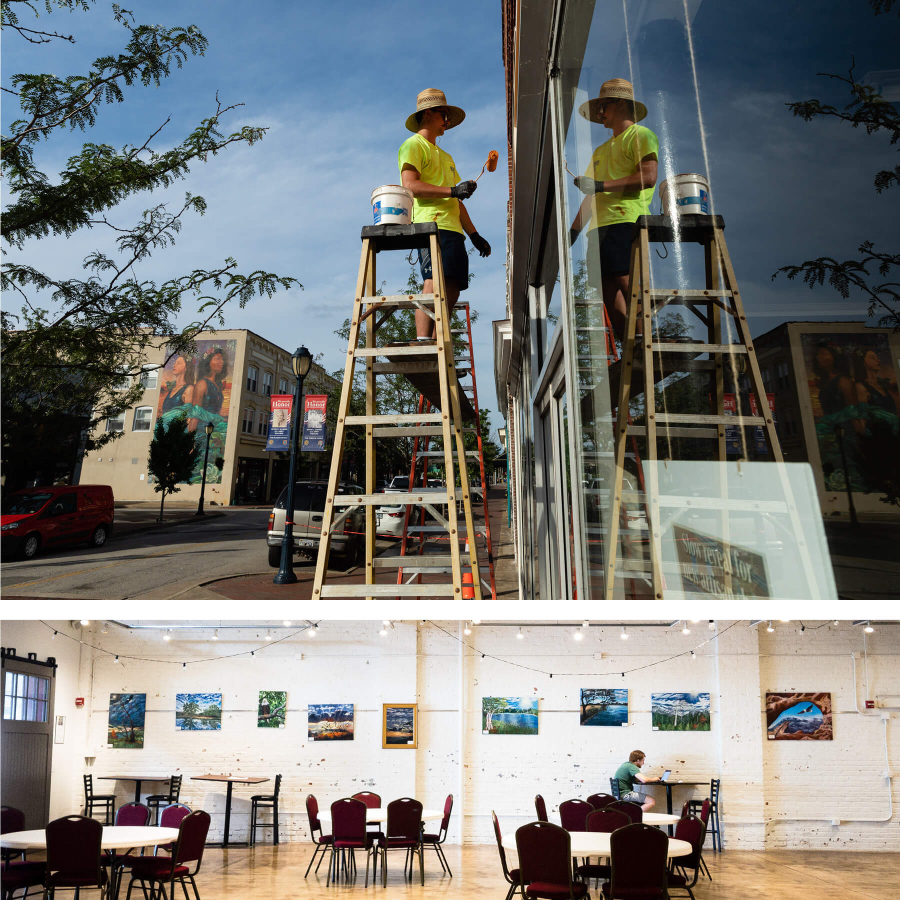
As you chip away at those factors, a community’s health improves, Gore says. And she sees “plenty of opportunity” for watershed restoration to “impact people's daily lives, even if they don't realize it.”
“One side of the city, I believe, lives ten years longer than the other side of the city,” Gore says. “That is the problem that we are trying to fix, in a nutshell.”
An early accomplishment through One Hopewell was to get Hopewell and neighboring Petersburg added to City Health Dashboard, a platform that provides access to local health data across a range of metrics including everything from income inequality and unemployment to access to parks and healthy foods.
“When you start overlaying those elements, you get to see which communities are in greater need than others,” Gore says.
Officials undertaking watershed restoration efforts should look beyond the immediate impact of their work to also consider effects in communities, Gore says. Maybe fixing an erosion issue also fixes a road that people depend on, or a flood control measure lets children play in their yard without being bombarded by mosquitos.
In that sense, the Riverwalk, the new park trails, and waters that are fishable and swimmable contribute to the same goal of community health as efforts like One Hopewell Initiative’s development of farmers’ markets to address food insecurity, or the Hopewell Downtown Partnership’s efforts to revitalize a prosperous business district near the river.
“One of the things I've been advocating since I've been on LGAC, especially as chair, is looking at equity and diversity as it comes to these issues and not only looking at watershed restoration or stormwater or these other things that people are interested in,” Gore says.
“It needs to be more than that.”
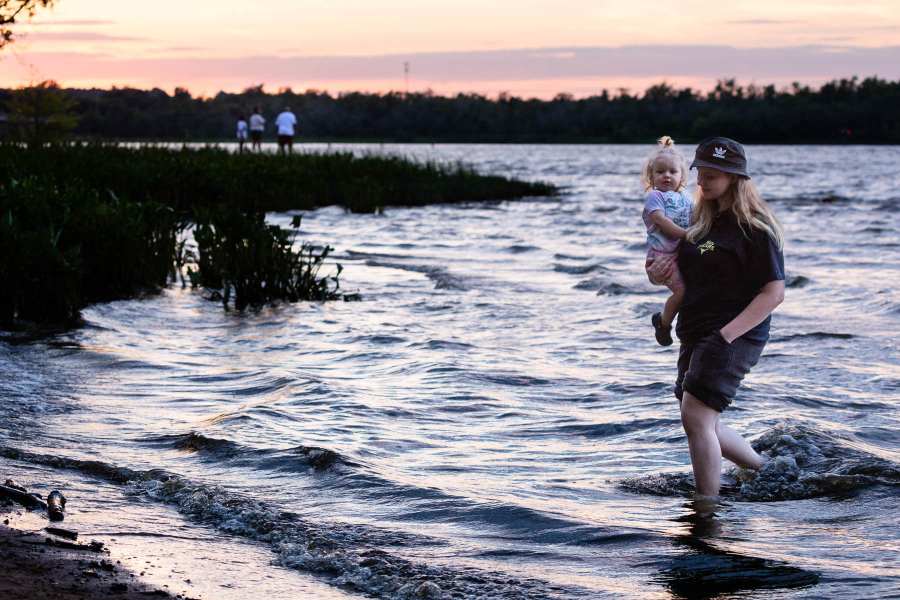

Comments
Gorgeous photos!!
Thank you!
Your comment has been received. Before it can be published, the comment will be reviewed by our team to ensure it adheres with our rules of engagement.
Back to recent stories